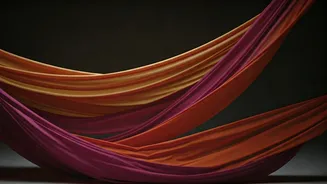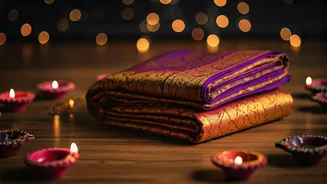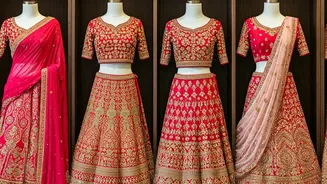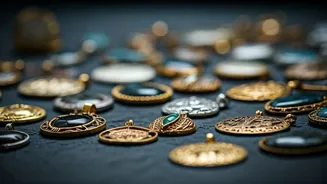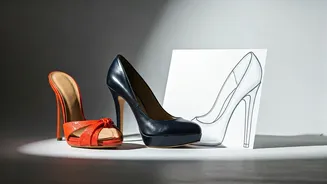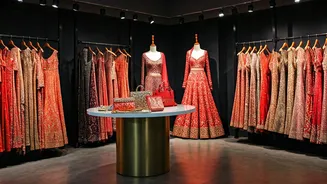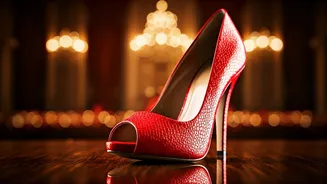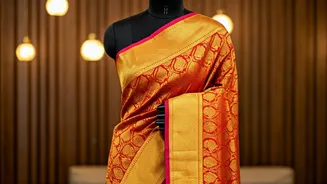Fashion's Historical Threads
Throughout history, fashion has been an undeniable mirror reflecting cultural values, technological innovations, and societal transformations. The styles
of the past offer insights into the lives and aspirations of previous generations. Examining the progression from ancient civilizations with their draped garments to the elaborate corsets of the Victorian era unveils how clothing mirrored power dynamics, social norms, and the available resources. The industrial revolution, with its mass production capabilities, brought about ready-to-wear clothing, making fashion more accessible to the masses. The emergence of haute couture, with its focus on craftsmanship and exclusivity, further shaped the landscape, while cultural exchange and global trade introduced diverse influences, giving rise to unique fusion styles. Consequently, understanding the past is essential to grasping the contemporary language of fashion and its influences. This historical perspective allows for a richer appreciation of how fashion serves as a continuous narrative of human ingenuity and cultural evolution.
Current Trends Unpacked
The fashion world in the present time exhibits a dynamic interplay of innovation, sustainability, and personal expression. Contemporary trends are no longer driven solely by established fashion houses; social media and street style heavily influence style choices. Minimalism, with its focus on clean lines and functionality, remains a significant force, emphasizing quality over quantity. Simultaneously, maximalism gains traction, embracing bold colors, eclectic patterns, and a 'more is more' approach. Sustainable fashion, with its commitment to environmentally friendly practices and ethical production, is gaining momentum as consumers become more conscious of the environmental and social impact of their purchases. Gender-fluid fashion further challenges traditional norms, blurring the lines between masculine and feminine styles and celebrating inclusivity. Furthermore, the rise of technology fuels innovation, leading to wearable tech and digital fashion, offering new avenues for expression and interaction. Current fashion is, therefore, a multifaceted and rapidly changing entity reflecting a broad spectrum of influences and values.
The Future of Style
Fashion’s future promises further integration with technology, an increased focus on sustainability, and a continued emphasis on individual expression. Virtual and augmented reality are poised to transform the shopping experience, allowing consumers to try on clothes and accessories without physically visiting a store. Digital fashion, where garments exist solely in the virtual realm, will become more prevalent, providing new avenues for self-expression, particularly in gaming and digital communities. Moreover, sustainable practices will become the standard, driving innovation in materials, production processes, and circular economy models. Customization and personalization will play a significant role, with technologies such as 3D printing enabling the creation of bespoke garments tailored to individual preferences and body types. The fashion industry is also expected to evolve toward greater inclusivity, embracing diverse body types, gender identities, and cultural backgrounds, and will become more accessible and representative of the global community.
Fashion's Cultural Impact
Fashion profoundly impacts society, acting as both a reflector and a shaper of cultural norms and values. Clothing often communicates social status, group affiliation, and personal identity. Fashion trends can influence body image ideals, beauty standards, and consumer behavior, promoting either conformity or individuality. The industry's economic impact is substantial, generating employment opportunities and driving global trade. Fashion also serves as a vehicle for artistic expression, with designers and stylists shaping visual narratives. Fashion's role as a mode of protest and social commentary is growing, with designers using their platforms to raise awareness about important issues such as human rights and environmental protection. However, the industry is also subject to criticism regarding labor practices, environmental sustainability, and cultural appropriation. To summarize, fashion is intertwined with social dynamics, playing a multifaceted role in shaping our world.
Fashion and Identity
Fashion is a powerful tool for self-discovery and the construction of individual and collective identities. The way people dress sends messages about their personalities, beliefs, and aspirations. Choices in clothing, accessories, and grooming can reflect cultural background, political affiliations, and personal aesthetics. Fashion allows individuals to experiment with different personas and explore varied aspects of themselves. Subcultures often utilize distinctive styles to establish a sense of community and belonging. Personal style can also become a form of resistance against societal norms or expectations, offering a way to challenge stereotypes and express individuality. By carefully curating their wardrobes, individuals curate their public image and convey their stories. Therefore, fashion's expressive capacity gives people a medium through which to craft and share their unique narratives and to define themselves in a world of complex social interactions.
